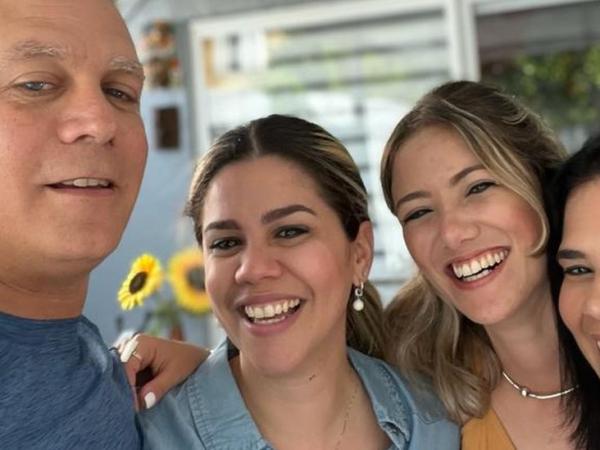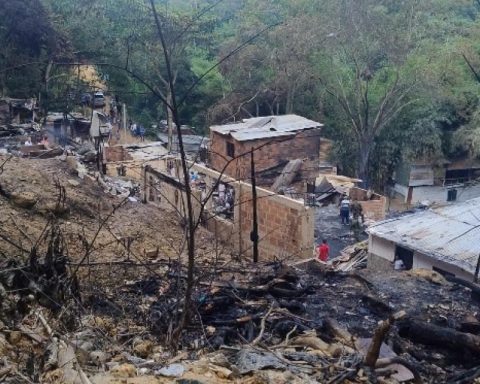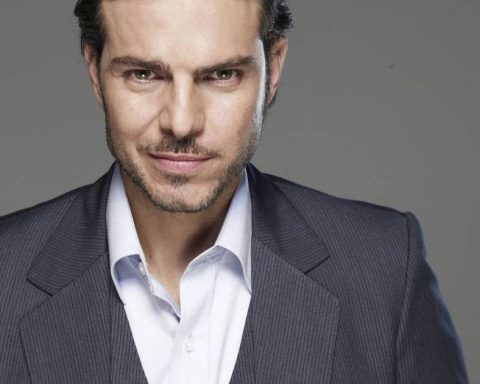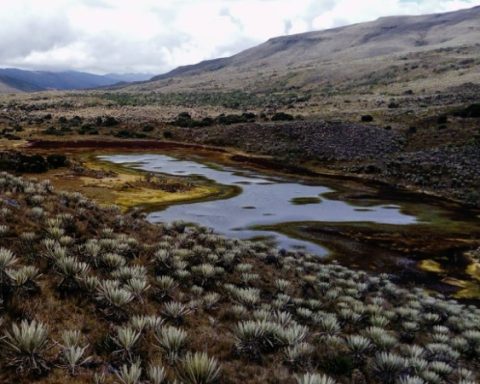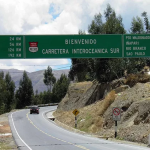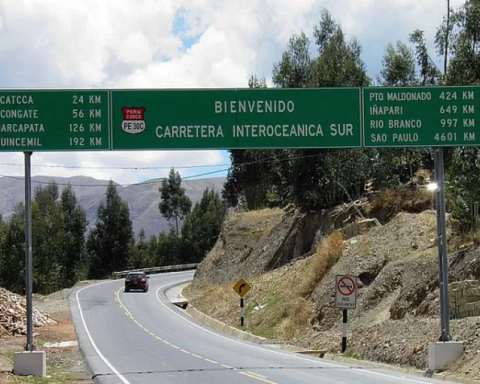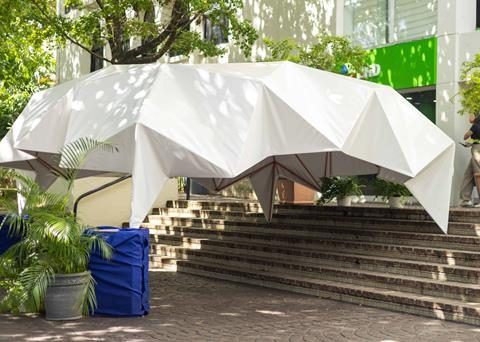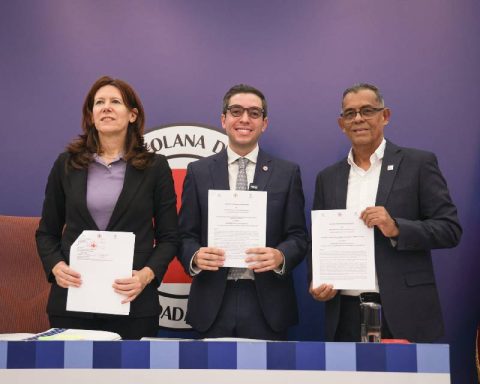Never before have so many Cubans arrived in the United States in a single year as in 2022.
As of November, they numbered some 270,000, according to accumulated data from US customs and the coast guard, which account for arrivals by land and sea respectively.
In other words, since January 2.4% of the 11.1 million inhabitants in Cuba have emigrated to the US, according to the most recent data from 2021.
This migratory wave exceeds the one unleashed after the triumph of Fidel Castro’s Revolution (250,000 expatriates between 1959 and 1962), the Mariel exodus of 1980 (some 125,000), the “Freedom Flights” that relocated some 300,000 Cubans between 1965 and 1973, and the crisis of the rafters of 1994 (more than 30,000).
The vast majority of Cubans who are emigrating to the United States in 2022 do so illegally and risking their lives on dangerous journeys.
The most common one consists of flying to Nicaragua, where they do not need a visa, and guided by mafias – each trip costs between US$8,000 and US$15,000 – traveling thousands of kilometers in hiding through Honduras, Guatemala and Mexico until they set foot on US soil.
There is also the less expensive but even more risky option of trying to reach the Florida coast by boat.
Plans sometimes fail and many end up dead or deported.
So why are so many Cubans risking their lives to get to the United States?
Diana Pérez, a 27-year-old philologist and social media administrator, arrived in Miami in March after a 16-day tour of Central America and Mexico that cost her about $10,000.
“I decided to come because in Cuba doing anything was impossible: buying food, cleaning products, going out for a coffee, living from your job… People no longer live there, they just survive,” he explained to BBC Mundo.
Eight out of ten Cubans who emigrate to the US are between the ages of 15 and 59, that is, the vast majority are of working age.
But they don’t want to do it in Cuba, where in a state job the average salary is around US$22 a month at the real exchange rate and the private sector is limited to a restricted group of activities and trades.
For sociologist Elaine Acosta, from Florida International University, the Cuban migratory wave is the product of “the structural crisis and the exhaustion of a political and socioeconomic model that does not offer viable alternatives to sustain life on the island.”
“Poverty and social and territorial inequalities have increased significantly, along with a progressive deterioration of social protection and assistance,” he explained to BBC Mundo.
Cuba has been in crisis for decades, but the pandemic (which caused a drop in tourism, a key sector), the tightening of the US embargo and a failed monetary and wage reform, among other factors, ended up sinking its economy.
Today the government is unable to pay its creditors, so supplies from abroad are limited, something especially serious in a country that imports between 60 and 70% of the food it consumes.
In an attempt to raise foreign currency, the State, which monopolizes legal trade in the country, sells food and basic products in dollars, a currency that only part of the population has access to.
This gave rise to a black market on the street but did not solve the problem of scarcity; and getting chicken, bread, rice, shampoo or toothpaste can require queues that last several hours starting at dawn.
“During the day, you either worked or stood in line to get food, you couldn’t do both,” recalls Diana.
His generation did not live through the relative prosperity of the 1970s and 80s, when the Soviet Union subsidized the island; just the long decline after the fall of the rest of the communist bloc.
Thus, for today’s young people, the prospects for the situation to change in the future are practically nil, so their dreams of professional success and an abundant life involve emigrating.
“As Joan Manuel Serrat said about rural Spain at the time of Francoism, today’s young Cubans do not expect this land to give them tomorrow what it did not give them yesterday,” summarizes Juan Carlos Albizu-Campos, a professor at the Center for BBC Mundo. of Studies of the Cuban Economy of the University of Havana.
On July 11, 2021, tens of thousands of Cubans took to the streets to demand freedom and better living conditions, in a hitherto unprecedented wave of protests.
The authorities responded in the following months with mass arrests and summary trials. More than 1,500 people, the majority young, were arrested and at least 670 remain in jail today, according to the NGO Cubalex.
It has also become commonplace to summon and question at the police station citizens who openly criticize the one-party system that has prevailed for more than six decades.
“There came a time when you couldn’t even express yourself, post anything or make a comment. Knowing that everything was wrong, you couldn’t say it because you could have a serious problem,” recalls Diana.
“In recent times, for posting any nonsense on Facebook they would give you a summons and you would be arrested,” he says.
The Cuban journalist, writer and activist Mónica Baró maintains that the lack of freedom is being an important factor -and often underestimated in the media- among those who push Cubans into exile.
“After July 11, many people who had participated in the demonstrations emigrated, scared by the level of repression,” he says.
He explains that, although a large part of the protesters and people who supported the marches were not arrested in the first months, “many were scared and feared that at some point they would be identified in a video and imprisoned.”
Alina Castillo, a 28-year-old theater and television actress, arrived in Miami in April after a 14-day odyssey through Central America similar to that of most Cubans who have arrived this year.
“I did not leave because I lacked food, but because of the limitations brought by not agreeing with the Cuban government. They did not allow freedom of expression for artists and intellectuals and we did not have the right to create a private space to express ourselves.”
“I saw that in a few years my career was going to be interrupted by the fact of thinking differently or having participated in a demonstration. I already felt that saying what I wanted could cause problems, even for my theater group,” he says.
The Cuban passport is one of the most restricted in the world and only gives access to a small number of countries freely, that is, without the need for long and complex visa procedures.
One of them is Nicaragua, since in November 2021 the governments of Daniel Ortega and Miguel Díaz-Canel signed an agreement to allow Cubans to freely enter the Central American country as tourists.
This thus became the main gateway to the mainland for those trying to reach the United States from the island.
Some experts believe that the agreement with Nicaragua was an intentional maneuver by the Cuban government to provide an escape valve for the population and alleviate internal pressures at a time of strong social discontent due to scarcity and repression.
“The Cuban government continues to use migration politically in an instrumental way, turning it into a tool to defuse internal pressure and discontent, as well as a negotiation mechanism with governments in the region,” says sociologist Elaine Acosta.
Albizu-Campos, for his part, downplays the visa exemption agreement.
“It is just one more facilitating factor: what it does is make mobility possible through a corridor, but the exodus would have occurred with or without an agreement between Cuba and Nicaragua,” he concludes.
In any case, it is significant that the numbers of Cuban migrants arriving at the border with the United States have skyrocketed since the opening of this new escape route.
Although in 2022 many Cubans also emigrated to Europe -especially from the circle of artists and intellectuals in Havana- and to other parts of Latin America and the world, the truth is that the vast majority went to the United States, for various reasons.
The first and fundamental is the assistance that Cuban families already living in the US -a community of more than 1.3 million people- offer their relatives who decide to leave the island.
“Having my uncles and cousins here made things easier for me. They welcomed me into their home, the first months I didn’t have to pay rent or food and, once settled, I can start thinking about becoming independent,” says Diana.
Similar is the case of Alina Castillo, who settled in her mother’s house, a resident of Miami for 8 years.
In addition, it is generally the relatives in the US who finance the illegal crossing from Cuba, unaffordable for the pocket of any inhabitant of the island.
And, on the other hand, there are the job opportunities that the North American country offers to migrants, and especially to Cubans.
It is an open secret that, unlike in Europe, in Miami and other cities in the United States it is relatively easy to work illegally in a restaurant, a store or any other business.
This, together with state aid in food and health, allows newcomers to guarantee their livelihood.
In addition, the Cuban Adjustment Law grants migrants from Cuba preferential treatment compared to those from other countries: if they spend a year and a day in the country, they can start processing their residency and in a few years they will become citizens.
“The privileges that Cuban migrants enjoy, both in terms of preferential admission and assistance upon arrival, have created incentives for them to leave Cuba for the United States,” William Leogrande, a professor at the American University in Washington DC, explains to BBC Mundo. and expert in Cuba-US relations.
BBC Mundo asked the Cuban government for statements on the current migratory wave, but received no response.
Remember that you can receive notifications from BBC News World. Download the new version of our app and activate them so you don’t miss out on our best content.
